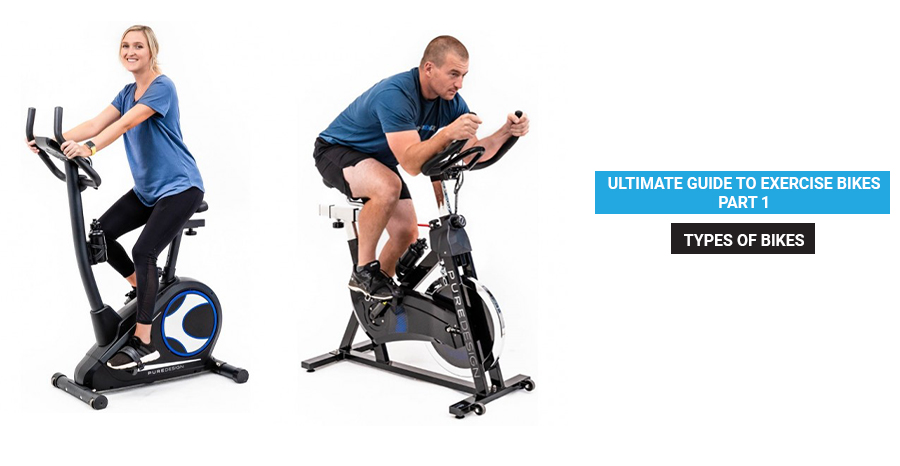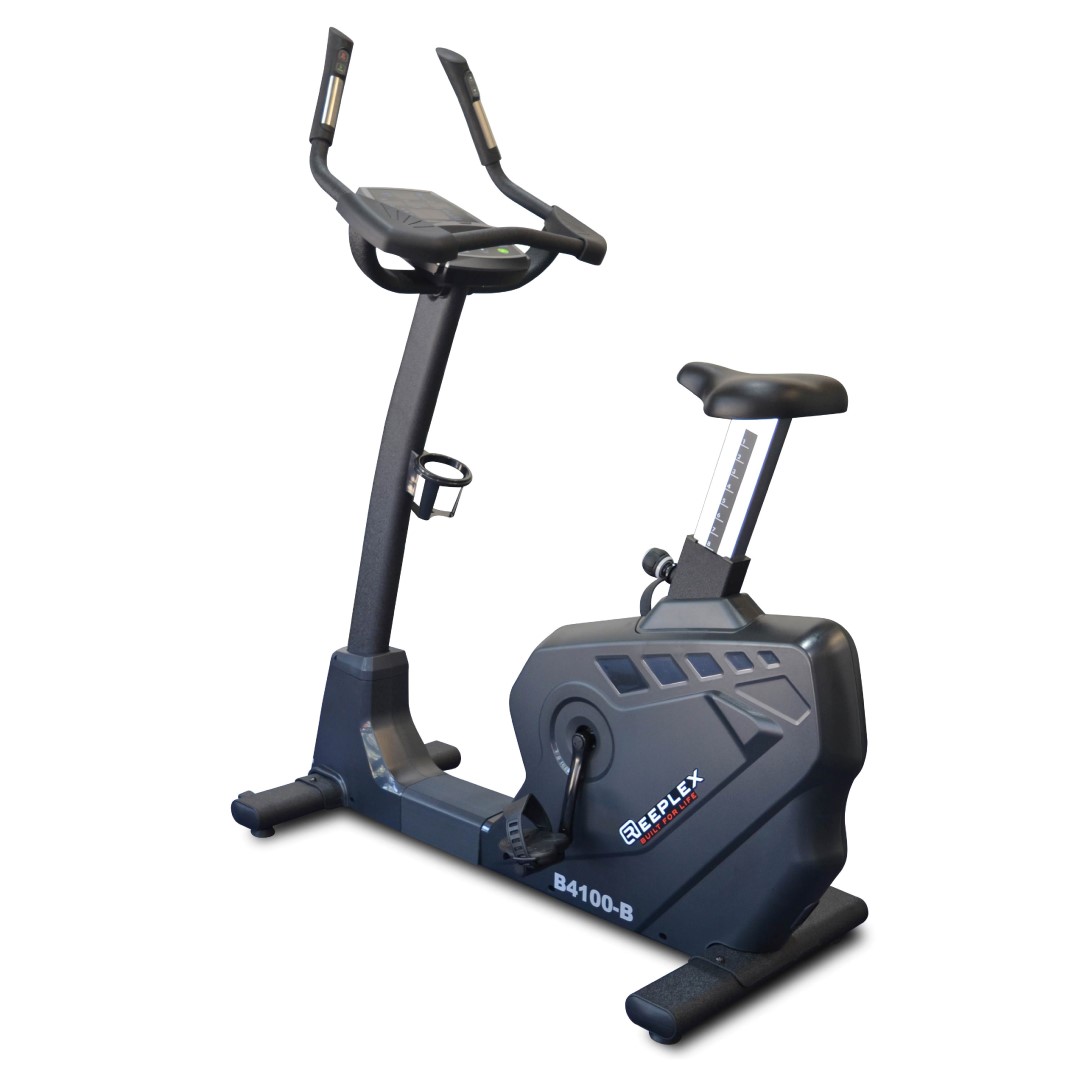
The Ultimate Exercise Bike Buying Guide: Part 1 – Bike Types and Options
While it might be nice to think we could always get outdoors to get our exercise, the reality is that weather and constraints on our time mean that we often need to train indoors. An exercise bike can be a great option for that regular cardio workout, but which bike to buy? There are many models and price ranges. What is right for you will depend upon a number of factors. How often will you ride? For how long? What are your goals, and of course, what can you afford?
In this post, we’ll cover the options available on different models, and provide a guideline for deciding upon the right exercise bike for you.
Be Honest with Yourself
At the start of any new endeavor, we tend to be filled with optimism. This can lead us to overestimate how much time and dedication we’re prepared to put in to that new workout program. If you’re replacing or upgrading an existing stationary bike and you already know exactly how much time you’ll put in that’s a reliable measure. But if you’re just starting out and have never owned an at-home exercise machine before, give yourself a reality check first. Otherwise, you might find yourself spending more than you need to for a bike that will meet your needs.
Types of Bikes
There are several different kinds of stationary bikes. Below is a short summary of each type:
Spin Bikes
Most often found in gyms for spin classes, these bikes have the basics only, although better models are very durable. The handles on these bikes are level with the seat, forcing the rider into an aerodynamic position that closely mimics the ride of a real bike. Typically resistance is set higher on these bikes so you’ll need to work harder. Also note that many stores, including ours, classify these as upright bikes (see next section). The difference is the direct contact resistance flywheel and the height of the handlebars.
If your goal is to really push yourself or to train for real biking, this is likely the right bike for you
Upright Bikes
With handles set higher in relation to the seat, an upright exercise bike may be a little more comfortable for long-duration workouts. They still require core strength though, as you’ll need your arms for support and balance.
More compact than recumbent bikes (see below), these bikes take up little space and may be equipped with wheels on one end to allow for easy storage when not in use. Higher end, gym-quality models are not so easily moved but often still have wheels equipped on one end.
If you plan to do long-duration fat-burning workouts at a lower intensity than what is encouraged by spin bikes, these are a great option. They are also good trainers for real biking. While the relative height of the handlebars is higher compared to the seat height than what is found on most real bikes, the riding experience is still very similar.
Recumbent Bikes
If you have back or groin issues, are extremely overweight or simply prefer to work out at a lower intensity and greater comfort level, the recumbent bike is for you. Rather than a traditional bike seat, recumbent bikes have a made-for-comfort full seat with an adjustable back. This allows you to recline at a comfortable angle while cycling.
These bikes are primarily for long-duration low-intensity fat burning workouts. Due to the extra construction required for these bikes, they do tend to be priced higher than the other two types.
The Sportop R60 Recumbent Exercise Bike offers a very comfortable adjustable seat, but still has a 9kg flywheel and 16 levels of resistance.
Commercial Bikes
Not really a type of bike, but rather a measure of the quality of construction and durability. Commercial versions of all of the above are what you might find in gyms. They are designed for high levels of use. If you plan to be exercising daily as part of a lifestyle you may wish to invest in a longer-lasting commercial bike.

Manual or Electric?
Some of the above types of bikes come in either manual or electric models. Either one can provide an excellent workout, however, only electric models can store information such as custom programs or past workouts. Manual models do often have electronic display panels, but these are powered by a mini generator that in turn is powered by you. You have to start pedaling on these bikes before the panel will come to life. Also, manual bikes usually require their resistance level to be set by turning a knob or moving a lever, where electric bikes set resistance digitally from the control panel.
Other Factors You’ll Want to Consider
Appearance
OK, if you’re a pragmatist this won’t matter to you, but most of us are concerned with aesthetics to some degree. Your bike will likely be somewhere visible most or all of the time. If you think it’s ugly, it won’t take long before you’ll be shopping for a more attractive replacement.
Weight
If you need a bike you can easily wheel away when you’re not using it, you want to opt for a lighter spin bike. If you’re quite heavy yourself, a heavier bike will be more stable. A more stable model would also be recommended if you plan to go fast and hard. Your bike shaking underneath you as you pedal is not only distracting but a warning that your bike may not last very long.
Noise
Some bikes make a lot of noise and if this bothers you, or you will be using the bike within earshot of others, a quiet bike will be desirable. Test it out before buying and be sure the noise level is acceptable to you.
The Seat
Most seats are adjustable in height and angle but once you buy the bike you’re probably stuck with the shape of the seat. Some bikes do have the same kind of mount for the seat as you’ll find on road and mountain bikes, but most do not. Once again, do a test ride and be sure the seat is one you can be comfortable on for your entire workout.
The FlyWheel
The most important functional component of any exercise bike, manual or electric, is the flywheel. This is such an extensive subject that it requires its own post. Check back next week for The Ultimate Exercise Bike Buying Guide: Part 2 – The Flywheel.
Our full line of exercise bikes Perth.
Visit our spin bikes page for more great spin bikes
Will Dove
Latest posts by Will Dove (see all)
- Body Weight Training 2.0: Calisthenics - 22 Apr
- All About Protein Powders - 9 Apr
- Top 5 Fitness Trends for 2019 That You Should Try - 30 Mar




